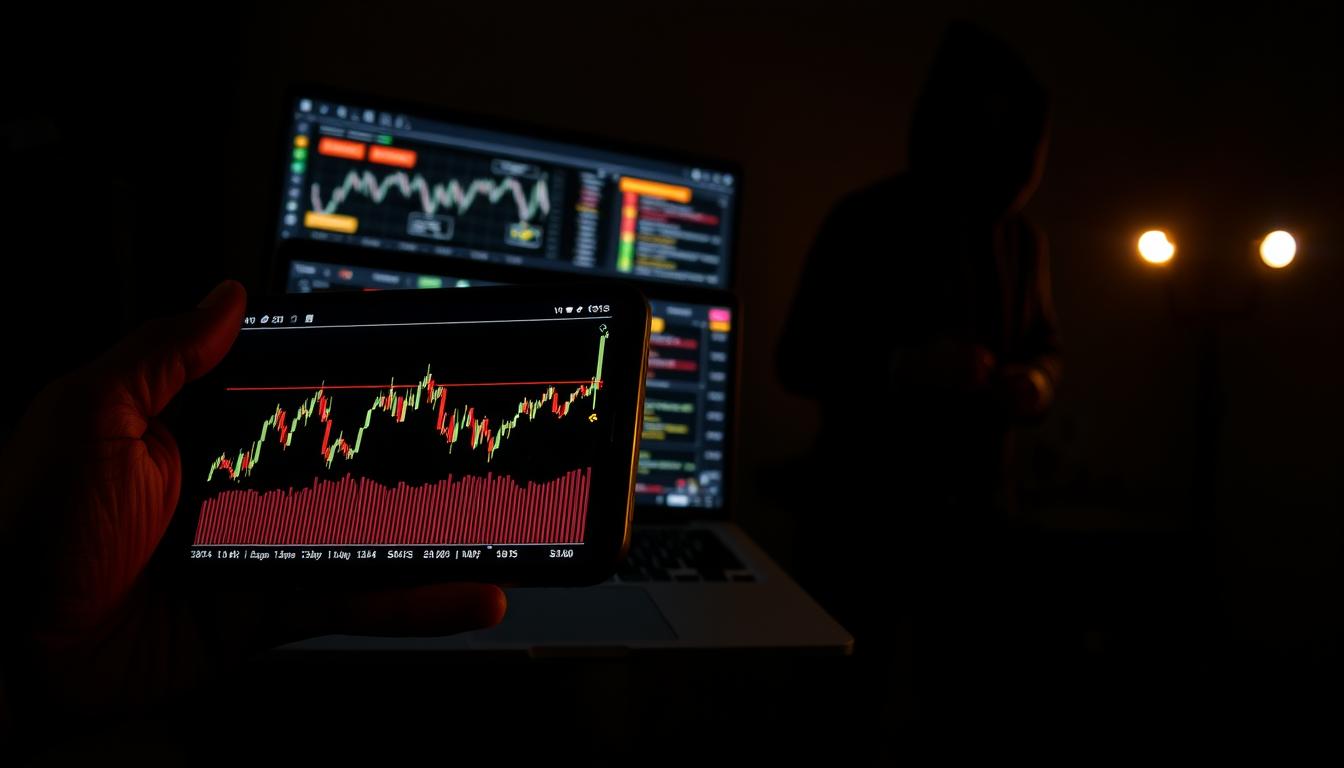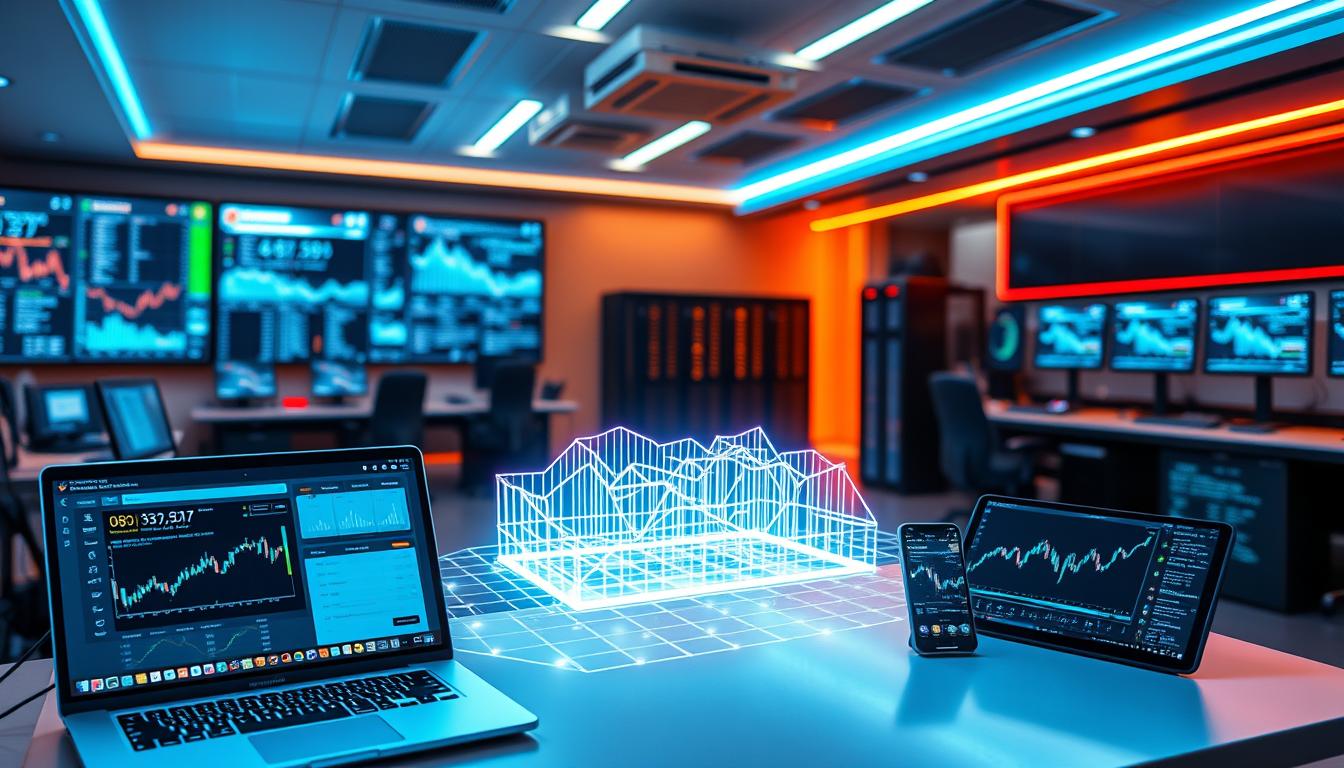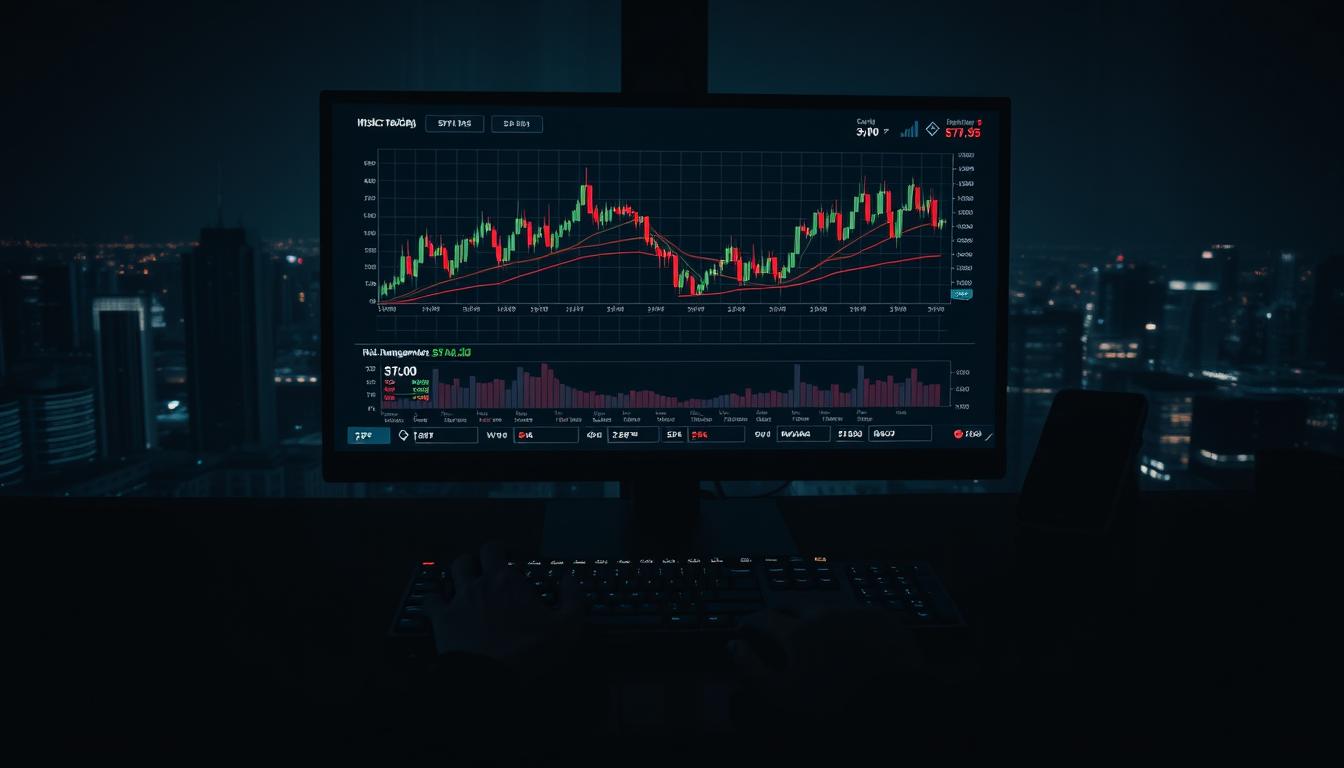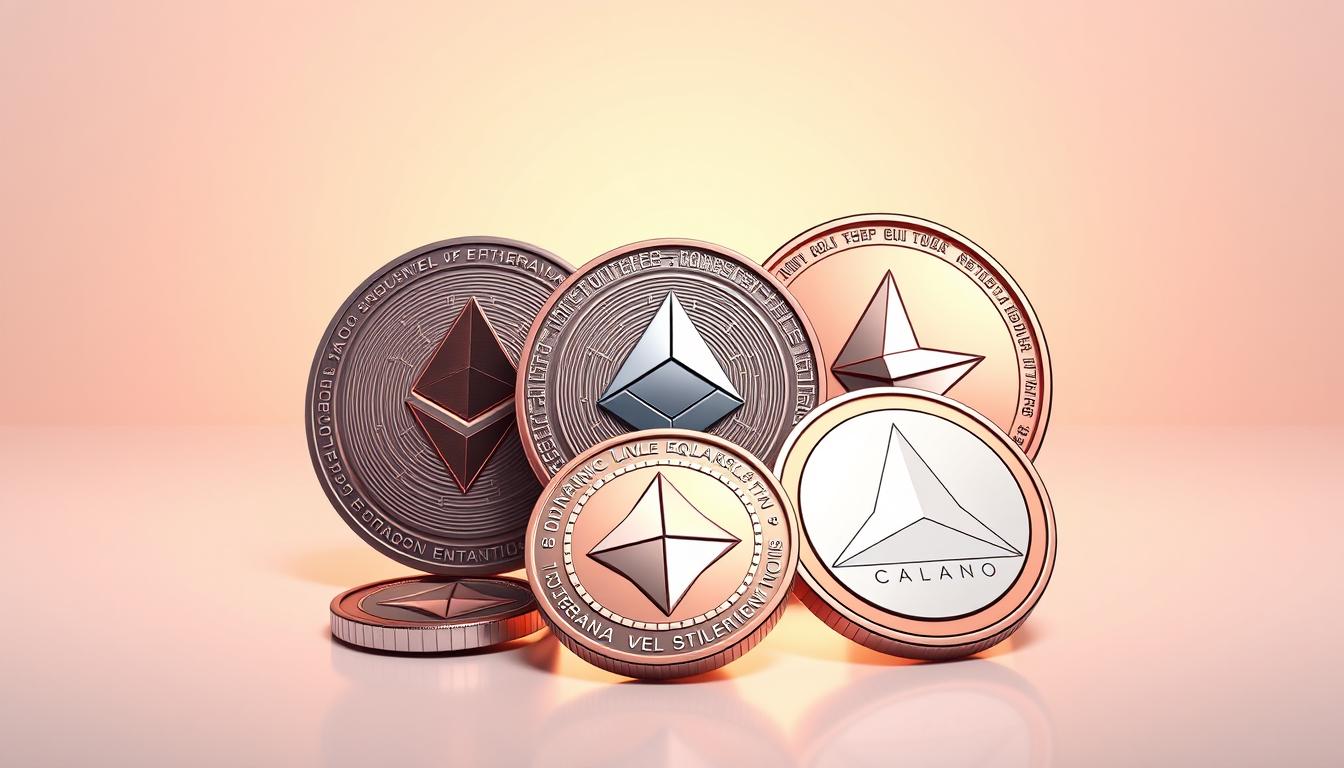Now Reading: How to Trade Decentralized Perpetuals: A Beginner’s Guide
- 01
How to Trade Decentralized Perpetuals: A Beginner’s Guide
How to Trade Decentralized Perpetuals: A Beginner’s Guide

Decentralized perpetuals are a big deal in the crypto world. They offer traders a lot of flexibility and leverage. It’s key for beginners to understand how to use these complex tools to make the most of the crypto market’s ups and downs.

Decentralized perpetuals are like bets on the future value of cryptocurrencies. They don’t have an end date. This guide will help beginners learn how to trade these on a crypto trading platform. It will cover important strategies and how to manage risks.
Key Takeaways
- Understanding the basics of decentralized perpetuals and their role in the cryptocurrency market.
- Learning how to use a cryptocurrency trading platform effectively.
- Identifying key strategies for trading decentralized perpetuals.
- Implementing risk management techniques to minimize losses.
- Navigating the complexities of leverage in decentralized perpetuals trading.
What Are Decentralized Perpetual Contracts?
Decentralized perpetual contracts blend traditional finance with blockchain tech. They open up new trading chances. These contracts let users bet on asset price changes without owning them.
The Mechanics of Perpetual Futures
Perpetual futures are like regular futures but never expire. This lets traders keep positions open forever. A funding system keeps the contract price near the asset’s current price.
This funding rate is paid between long and short traders at set times, usually every few hours.
Differences Between Centralized and Decentralized Perpetuals
The main difference is in their setup and user control. Decentralized perpetual contracts use blockchain for trustless and clear trading. This means no middlemen are needed.
On the other hand, central exchanges are run by one person or group. This can cause problems like censorship and risk of losing assets.
Decentralized perpetual contracts have big pluses. They offer better security, clearness, and keep your assets safe. You don’t have to rely on someone else with your money, cutting down on risks.
The Evolution of Decentralized Derivatives
Decentralized derivatives have changed how traders deal with financial tools. This change is because of the need for easier, clearer, and safer places to trade.
From Traditional Finance to DeFi
Old financial systems rely on central authorities and middlemen. These can lead to risks and make it hard for everyone to trade. Decentralized exchanges and DeFi platforms have changed this by offering a new way to trade futures and other financial products.
Now, traders can handle their assets more freely. This is thanks to blockchain, which keeps transactions clear and unchangeable.

Blockchain Technology Enabling Trustless Trading
Blockchain is key to decentralized derivatives, making trustless trading possible. It keeps trades safe and open. Smart contracts on these platforms make trades happen automatically, cutting out the middleman and lowering risk.
Blockchain also makes sure all trades are recorded on a public ledger. This makes the history of trades clear and safe from tampering. This openness and safety have made decentralized derivatives popular for managing risks and making money.
Benefits of Decentralized Perpetuals Trading
Decentralized perpetuals trading offers many benefits that are changing the way we trade. It uses blockchain technology and smart contract trading. This makes trading more secure, transparent, and efficient.
Self-Custody and Asset Control
One big plus of decentralized perpetuals trading is self-custody of assets. Unlike traditional exchanges, you keep your assets safe. This is thanks to peer-to-peer trading and non-custodial wallets.
This reduces the risk of losing assets to exchange hacks or mismanagement.
Elimination of Counterparty Risk
Decentralized perpetuals trading gets rid of counterparty risk. It doesn’t need intermediaries. Trades are made directly between buyers and sellers, or between traders and smart contracts.
This makes transactions trustless and less likely to fail. It boosts the security and reliability of trading.
Transparency and Censorship Resistance
Blockchain technology in decentralized perpetuals trading brings transparency and censorship resistance. All trades are recorded on a public ledger. This lets you check and confirm trades.
This openness, along with the decentralized nature of platforms, makes it hard for anyone to manipulate or block transactions. It helps create a fair trading space.
Understanding the Risks in DeFi Trading
DeFi trading platforms are different because they don’t have some traditional risks. But, they have new ones like smart contract bugs and price tricks. It’s key to know these risks to make smart choices.
Smart Contract Vulnerabilities
Smart contracts are like digital contracts that run on their own code. But, if the code has bugs, hackers can cause big losses. Before trading, check the security and audits of the smart contracts used by the platform.
Liquidity and Slippage Concerns
Liquidity means you can buy or sell quickly and fairly. In DeFi, low liquidity can lead to big slippage. This means the trade price can be much worse than expected, quickly eating into your money. Be careful with platforms or pairs that have low liquidity.

Oracle Price Manipulation
Oracles give important price info to DeFi systems, helping them make trades. But, oracles can be tricked, causing wrong prices and losses. Knowing how oracles work and their weak spots is crucial to avoid these problems.
By understanding these risks and how to deal with them, traders can safely explore DeFi. This helps protect their investments.
Essential Tools for Trading Decentralized Perpetuals
Decentralized finance has brought new tools for trading perpetual contracts. To trade these contracts well, you need the right tech and platforms.
Compatible Crypto Wallets
Choosing the right crypto wallet is key for trading decentralized perpetuals. You have to decide between hardware and software wallets.
Hardware vs. Software Wallets
Hardware wallets keep your private keys offline, making them safer from hackers. On the other hand, software wallets are quicker and easier to use. It’s a trade-off between security and speed.
- Security-focused traders might choose Ledger or Trezor.
- Traders who value ease might go for MetaMask.
Multi-Chain Wallet Solutions
As more blockchains emerge, multi-chain wallet solutions become crucial. They let you manage assets across different chains easily. This makes accessing various exchanges and platforms simpler.
Analytics and Market Data Tools
Analytics and market data tools are vital for making smart trades. They give you real-time data on trends, prices, and volumes. This helps you understand the market better.
- CoinMarketCap and CoinGecko offer insights on market size and trends.
- TradingView has advanced charts and analysis tools.
Using these tools can improve your trading skills. They help you tackle the challenges of decentralized perpetuals markets.
Setting Up Your Trading Environment
To get into DeFi trading, setting up your environment is key. This means several important steps to get you ready for the decentralized perpetuals market.
Creating and Securing Your Wallet
The first thing is to create and secure a crypto wallet. This wallet will hold your assets and connect you to decentralized exchanges. Look for a wallet that’s secure, easy to use, and works with the blockchains you’ll use. MetaMask and Trust Wallet are good choices because they’re secure and easy to use.
To keep your wallet safe, turn on 2FA and use a strong password. Also, back up your wallet’s private keys or seed phrase. Store them somewhere safe, offline. This keeps your assets safe from hackers and lost passwords.
Acquiring and Transferring Cryptocurrency
After setting up your wallet, you need to get some cryptocurrency to trade. You can buy it on places like Coinbase or Binance, or through peer-to-peer sites. Make sure you’re using the right blockchain network to avoid losing your money.
Know the fees for moving cryptocurrency because they can change a lot. Use tools like Blocknative or GasNow to figure out gas fees and make your transfers better.
Connecting to Decentralized Exchanges
With cryptocurrency in your wallet, you’re ready to trade on a decentralized exchange (DEX). Sites like dYdX and Perpetual Protocol are good for perpetuals trading. You’ll connect your wallet to the platform using MetaMask or a similar Web3 tool.

When you connect to a DEX, watch out for phishing scams and make sure you’re on the right site. Check the platform’s security and know about smart contract risks. This way, you can trade safely and enjoy the perks of DeFi perpetuals trading, like peer-to-peer and smart contract trading.
By following these steps, you’re ready to dive into DeFi perpetuals trading. You’ll be able to take advantage of the new opportunities in this fast-changing market.
Leading Decentralized Perpetuals Platforms
Decentralized perpetuals trading is becoming more popular. This is thanks to new platforms that offer more flexibility and control. These platforms are changing how we trade cryptocurrencies by making it safer, more efficient, and decentralized.
dYdX: Features and User Experience
dYdX is a big name in decentralized perpetuals trading. It’s known for its strong trading engine and easy-to-use interface. It lets traders use perpetual contracts for various cryptocurrencies and offers high liquidity and competitive fees.
Perpetual Protocol: Platform Overview
Perpetual Protocol is also well-liked for its new take on decentralized perpetuals trading. It uses a virtual AMM (vAMM) to keep continuous liquidity and helps find efficient prices.
GMX: Key Differentiators
GMX stands out with features like zero slippage trades and leverage trading. It supports both market makers and retail traders, offering a full trading experience.
Emerging Platforms Worth Watching
While big names like dYdX, Perpetual Protocol, and GMX lead the market, new platforms are also catching attention. These newcomers are bringing new trading mechanics and improved user interfaces. They could offer even more benefits in the future.
Step-by-Step Guide to Executing Your First Trade
Starting your first trade in decentralized perpetuals can be thrilling and a bit scary. But, with the right help, you can feel confident as you start trading. Knowing how to execute a trade is key when you’re new to digital asset trading.
Selecting a Trading Pair and Platform
The first thing to do is pick a trading pair and platform. Sites like dYdX, Perpetual Protocol, and GMX have many options. Think about liquidity, volatility, and how much risk you’re okay with when choosing.
Understanding Leverage and Collateral Requirements
Trading futures with leverage is common in decentralized perpetuals. It lets you control big positions with less money. But, knowing the leverage and collateral needs is important. Leverage can make both profits and losses bigger, so handle it wisely.
Placing Long and Short Orders
After picking your pair and understanding leverage, it’s time to place your order. You can go long or short based on what you think will happen in the market.
Market Orders vs. Limit Orders
You can choose between market and limit orders. A market order goes through at the current price right away. A limit order lets you set a price for when it goes through.
Setting Order Parameters
Choosing the right order details is important. Decide on the size of your position, leverage, and any stop-loss or take-profit levels. Think about these carefully to manage your risk well.
Managing and Monitoring Open Positions
After you’ve placed your trade, watching your positions closely is crucial. Keep an eye on market changes and adjust your positions to reduce risk. Good trade management is essential for success in digital asset trading on decentralized exchanges.
Mastering Funding Rates in Perpetual Markets
In decentralized finance, understanding funding rates is key to success. Funding rates keep the market balanced in perpetual contracts.
How Funding Rate Mechanisms Work
Funding rates help traders take positions that align with the asset’s true price. If the rate is positive, longs pay shorts. If it’s negative, shorts pay longs. This keeps the market in balance.
Funding rates are based on the difference between the contract price and the asset’s spot price. They adjust at regular times. Knowing how to calculate and use these rates is crucial for traders.
Developing Strategies Based on Funding Rates
Traders can use funding rates to improve their trading. For example, watching funding rates can show trends and market shifts. A high rate might mean the market is going up, while a low rate could mean it’s going down.
By analyzing funding rates, traders in decentralized finance and blockchain trading can make better choices. This can lead to higher profits in perpetual contracts.
Effective Risk Management for Perpetuals Traders
To succeed in the volatile world of cryptocurrency trading, effective risk management strategies are essential. Decentralized perpetuals trading, in particular, requires a comprehensive approach to managing risk. This is due to its unique characteristics and the inherent volatility of the cryptocurrency market.
Position Sizing and Leverage Control
One of the fundamental aspects of risk management in decentralized perpetuals trading is position sizing. This involves determining the appropriate amount of capital to allocate to each trade. It’s based on your overall portfolio size and risk tolerance. Leverage control is also critical, as high leverage can amplify both gains and losses. Traders should carefully consider their leverage levels to avoid over-exposure.
For instance, a conservative approach to position sizing might limit any single trade to 2-3% of the total portfolio value. This strategy helps in mitigating potential losses and maintaining a healthy portfolio balance.
Implementing Stop-Loss and Take-Profit Orders
Stop-loss orders are a crucial tool for limiting potential losses in volatile markets. By setting a stop-loss order, traders can automatically close a position when it reaches a certain price. This prevents further losses. Take-profit orders allow traders to lock in gains when a trade reaches a predetermined level of profitability.
Effective use of these orders requires a deep understanding of market dynamics. It also requires the ability to set realistic price targets. It’s also important to adjust these orders as market conditions change.
Hedging Strategies for Volatile Crypto Markets
Hedging is a sophisticated risk management technique used to mitigate potential losses. It involves taking positions in assets that offset the risk of other positions. In the context of decentralized perpetuals, hedging can involve taking opposing positions in correlated assets or using other financial instruments to balance risk.
For example, if a trader holds a long position in a particular cryptocurrency perpetual contract, they might hedge this risk. They might take a short position in a correlated cryptocurrency or a related futures contract. This can help in reducing overall portfolio risk.

Advanced Decentralized Perpetuals Trading Techniques
Experienced traders in DeFi are always looking for new ways to win. They use advanced strategies to make more money. As decentralized perpetuals change, they seek better ways to profit.
Cross-Exchange Arbitrage Opportunities
Cross-exchange arbitrage means finding price differences between DEXs. Traders buy low and sell high, making good money. They need fast data and quick action to succeed.
Basis Trading Strategies
Basis trading uses the gap between spot and futures prices. Traders make money as prices meet. It needs a good grasp of market trends.
Implementing Automated Trading Strategies
Automated trading makes trading faster and more precise. Trading bots and scripts do the work, freeing up time. They watch markets and make trades automatically.
Using Trading Bots and Scripts
Trading bots follow set strategies, reducing emotional mistakes. dYdX and Perpetual Protocol are great for using these tools.
API Integration Considerations
APIs are key for automated trading. Look at data speed, security, and API reliability. A stable, secure API is crucial for success.
Navigating Tax and Regulatory Considerations
The world of decentralized finance (DeFi) is growing fast. Traders now face a complex mix of tax and regulatory rules. The rise of decentralized exchanges and blockchain trading highlights the need for clear legal and tax knowledge.
Record-Keeping for DeFi Trading Activities
Keeping good records is key for DeFi traders to follow tax laws. They need to document all trades on cryptocurrency trading platforms. This includes:
- Transaction dates and times
- Amounts traded and the value in the local currency at the time of the transaction
- Any fees associated with the transactions
Understanding Regulatory Compliance
Regulatory rules are also important for DeFi traders. It’s vital to keep up with changes in laws around blockchain trading and decentralized exchanges. Key points to remember are:
- Knowing the legal status of DeFi in your area
- Following anti-money laundering (AML) and know-your-customer (KYC) rules
By keeping detailed records and staying updated on laws, DeFi traders can better handle tax and regulatory issues.
Common Mistakes to Avoid When Trading Perpetuals
To succeed in trading perpetual futures, it’s key to know and avoid common errors. Decentralized perpetuals trading offers big chances, but it also has unique challenges. These challenges can lead to big losses if not handled right.
Overleveraging Your Positions
One big risk in trading perpetual futures is overleveraging. Leverage can make gains bigger, but it also makes losses bigger. Traders should be careful and not take on too much. They should make sure they have enough money to cover possible losses.
A good idea is to keep leverage low and adjust it based on market changes.
Ignoring Gas Fees and Network Congestion
Traders often forget how gas fees and network congestion affect their trading. High gas fees can eat into profits, which is a big problem for frequent traders. It’s important to watch gas prices and plan trades wisely.
Also, knowing when the network is busy can help avoid delays or higher costs.
Neglecting Platform Security Research
Security is very important in decentralized trading. Traders should do deep research on the platform’s security before trading. Look for audit reports, insurance funds, and user reviews. Having a secure platform can protect traders from hacks and financial losses.
By knowing these common mistakes, traders can handle the challenges of decentralized perpetuals trading better. Staying informed and using best practices can greatly improve trading results.
The Future Landscape of Decentralized Derivatives
The DeFi sector is growing fast, with decentralized derivatives leading the way. Blockchain trading is getting better, and we’ll see big changes in peer-to-peer trading platforms.
Decentralized perpetual contracts are already big, with almost $100 billion traded weekly. Platforms like Zeus Exchange on Base Chain are changing DeFi trading. They offer high leverage, low fees, and fast order execution. For more on how perpetual trading on Base will change DeFi, check out the Medium analysis.
As DeFi grows, we’ll see new tech in blockchain trading. This will make trading better. The future of DeFi trading looks bright, with improvements in scalability, security, and user interface.
Decentralized exchanges and peer-to-peer trading are making DeFi stronger. As the industry grows, it’s key for traders and investors to keep up with the latest in decentralized derivatives.
FAQ
What are decentralized perpetual contracts?
Decentralized perpetual contracts are a way to bet on a cryptocurrency’s future value without a deadline. They are traded on blockchain platforms. This makes transactions safe and open to everyone.
How do funding rates work in perpetual contracts?
Funding rates are payments made between traders with long and short positions. The rate is based on the difference between the contract price and the asset’s spot price. It helps keep the contract price close to the spot price.
What is the difference between a centralized and decentralized exchange for trading perpetuals?
Centralized exchanges are traditional platforms run by an intermediary. Decentralized exchanges use blockchain for peer-to-peer transactions. This makes them more secure, transparent, and gives users more control.
How can I manage risk when trading decentralized perpetuals?
To manage risk, use strategies like position sizing and controlling leverage. Set stop-loss and take-profit orders and hedge your bets. It’s also important to understand the market’s volatility and the specifics of the contracts you’re trading.
What are some common mistakes to avoid when trading perpetuals?
Avoid overleveraging, ignoring gas fees, and not researching platform security. Knowing these common mistakes can help you trade more safely.
How do I choose a compatible crypto wallet for DeFi trading?
Look for a wallet that matches the blockchain you’re trading on. Consider security, ease of use, and support for various assets. Hardware wallets are more secure, while software wallets are more convenient.
What are the benefits of using decentralized perpetuals platforms like dYdX or Perpetual Protocol?
Platforms like dYdX and Perpetual Protocol offer self-custody, no counterparty risk, and transparency. They also have a wide range of trading pairs and leverage options, making trading more flexible.
How do I get started with trading decentralized perpetuals?
Start by setting up a compatible crypto wallet and getting the necessary cryptocurrency. Connect to a decentralized exchange and learn the platform’s interface. Get familiar with the trading tools and features.













